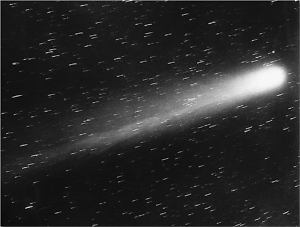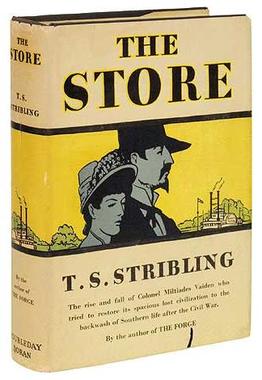The Comet
The lump of dust and ice that has fascinated humankind for millennia
Sometimes when I’m between books I’ll pick up a volume of Mark Twain and reread some of his still relevant brilliance. Works such as “Fenimore Cooper’s Literary Offenses,” “The Danger of Lying in Bed,” or one of the tall tales that made Roughing It one of my favorite volumes. As I read, I think about the places he lived that I have visited. Hannibal, Missouri. Elmira, New York. Hartford, Connecticut. And I also think about the comet, for it is impossible for me to read Twain without remembering that his life began and ended with the appearance of Halley’s Comet in 1835 and 1910. He predicted his demise that year and hoped to ride the comet across the heavens.

While reading Twain recently I went one step further and thought about my own encounter with the comet named for Edmund Halley, the man who discovered that it was the same comet making an appearance every 75 years or so. It is a safe assertion that Halley’s Comet is the most famous repeat visitor to our neck of the solar system, something it’s done about 30 times in recorded history. The lump of dust and ice has fascinated humankind for millennia and shows no sign of relinquishing its hold on us.
I first learned about Halley’s Comet as a child, leafing through The Universe volume of the Life Nature Library, which resided on the built-in bookshelves next to the fireplace in my boyhood home. Inspired by that book and the moon landings and blessed with a night sky full of stars over our rural property, I became interested in astronomy.
By the time I entered high school I’d spent many night or early morning hours in the front yard — the back was too brightly lit by the mercury-vapor lamp by the barn — with my brother’s refracting telescope, our beat-up old binoculars, and Peterson’s A Field Guide to the Stars and Planets, first edition, eighth printing. I still have the book, which promises accuracy “at least until 1980.”
Near the end of the Peterson guide is a brief section titled “Other Bodies of the Solar System,” in which comets are described. The text is illustrated with a full-page black-and-white photograph of Halley’s Comet, “next due to return in 1986.”
Hurray! I would be in my 25th year in 1986 and couldn’t wait to see the most famous comet of all. From my reading, I knew that Earth had passed through the tail of the comet during the 1910 encounter, the year, even the month, that Twain died. Assuming I lived to see the age of 25, which in those days of youthful immortality I rarely doubted, I would get to see quite an astronomical show.
In the meantime, I asked a few questions, including of my father’s father. I did so on an evening visit with Grandpa at his home in Detroit, a clear, warm night when we stood on the porch looking at a sky so aglow with city light that only the brightest stars could be seen. I knew he remembered 1910, had been a young man of 18 that momentous year, and I wanted a firsthand account of what it was like to pass through the tail of a comet. He remembered the event, but Grandpa was a practical-minded man who, in his youth, had labored as a tenant farmer. He was interested more in what could put food on the table than in the wonders of the universe and was certainly not given to inspirational or poetic turns of phrase. He said simply that there had been a bright glow in the sky accompanied by lots of shooting stars and that many people thought the end of the world was at hand. With no more for him to tell, we went back inside and watched TV. He died in 1983, three years shy of a second visit with the comet.
But I kept waiting, anxious to see the heavenly light show promised by the books. By early 1986, I was finishing my graduate studies in geology (somewhere along the way, my love of rocks and fossils had eclipsed my interest in stars). I was also smitten with a young woman, an Illinois girl I had met at school. We were dating quite seriously by early April of that year, when Halley’s made its closest approach. We drove into the desktop-level farmland of Illinois one chilly night, my girlfriend and I, to find the comet in the sky above fallow cornfields. We saw it, a faint smudge in the dark, but the event did not live up to expectations.
“The 1986 apparition of Halley’s Comet was the least favorable on record,” notes the Wikipedia article about the event. The worst showing in over 2,000 years. Grandpa didn’t miss much, and I was left distinctly disappointed. At least I had my girlfriend to comfort me.
In fact, if comets are omens, messengers from the gods as ancient people believed, Halley’s certainly augured well for me. In 1986, I successfully defended my thesis, passed my oral exam, received my Master of Science, got my first job as a geologist, and, most favorably, received a “yes” when I asked that girlfriend to marry me. All in all, not a bad trade for a lousy comet viewing.
Now I must look forward to the next visit, which is already predicted to be a much better show. In 2061, Halley’s will appear bright in the sky just a few months shy of my 100th birthday. What the world will be like that year is anybody’s guess, but I suspect civilization will be here to greet the comet. As Grandpa liked to say, “This old world just keeps right on turning,” and I may still be a passenger. If so, I’ll be watching for what I’d hoped to see that eventful year of 1986.
And if he feels generous, maybe Mark Twain will invite me aboard for the ride of my life.

A Michigan native, Chris Scott is an unrepentant Yankee who arrived in Nashville more than 30 years ago and has gradually adapted to Southern ways. He is a geologist by profession and an historian by avocation.


